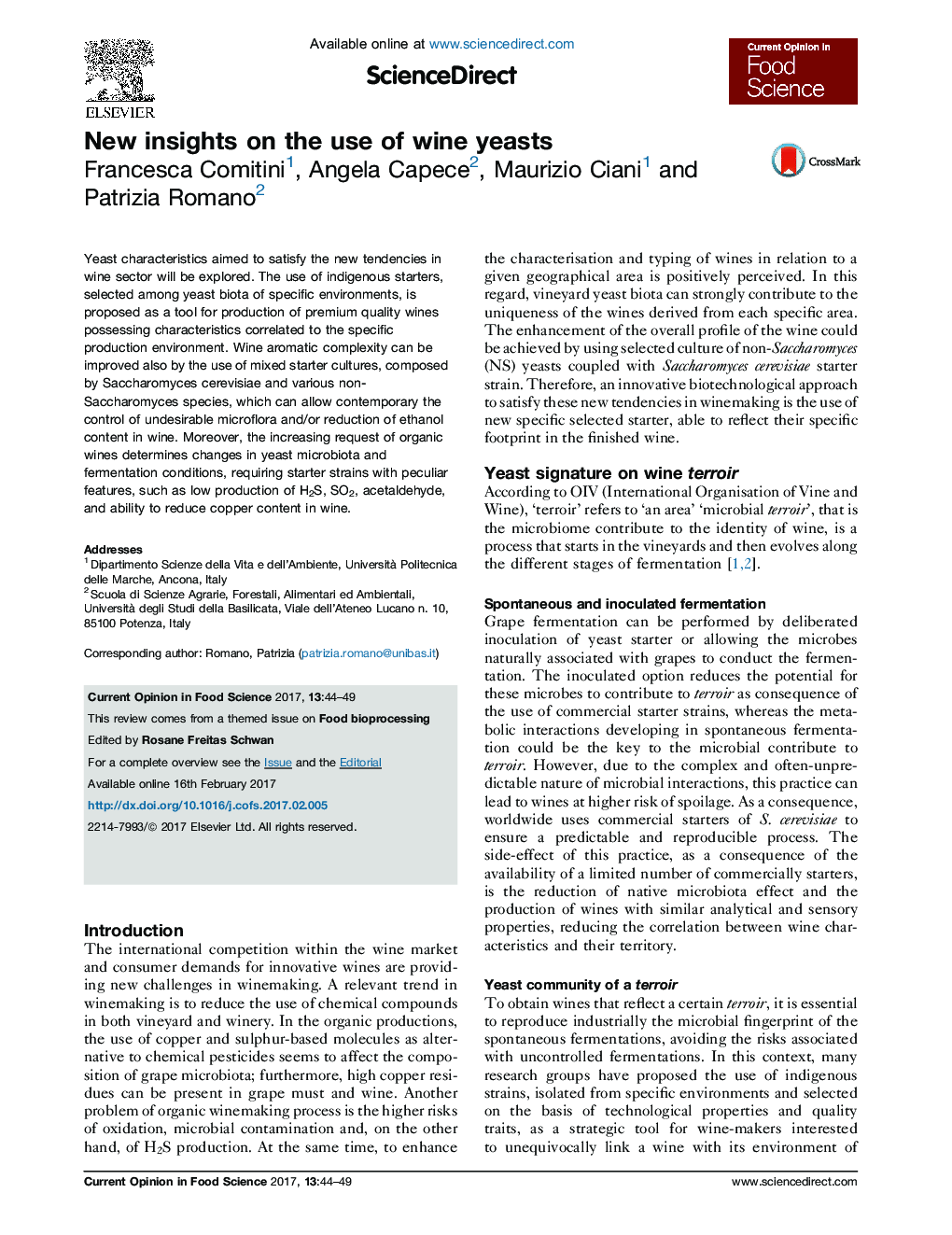| Article ID | Journal | Published Year | Pages | File Type |
|---|---|---|---|---|
| 5520935 | Current Opinion in Food Science | 2017 | 6 Pages |
â¢The use of indigenous starters safeguards wine traits related to production area.â¢The inoculum of mixed starters allows to obtain multiple beneficial actions.â¢Non-Saccharomyces (NS) yeasts are able to enhance wine complexity.â¢NS yeasts control spoilage yeasts and reduce the ethanol content in wine.â¢Selected S. cerevisiae strains are able to remove the copper excess from wine.
Yeast characteristics aimed to satisfy the new tendencies in wine sector will be explored. The use of indigenous starters, selected among yeast biota of specific environments, is proposed as a tool for production of premium quality wines possessing characteristics correlated to the specific production environment. Wine aromatic complexity can be improved also by the use of mixed starter cultures, composed by Saccharomyces cerevisiae and various non-Saccharomyces species, which can allow contemporary the control of undesirable microflora and/or reduction of ethanol content in wine. Moreover, the increasing request of organic wines determines changes in yeast microbiota and fermentation conditions, requiring starter strains with peculiar features, such as low production of H2S, SO2, acetaldehyde, and ability to reduce copper content in wine.
Graphical abstractDownload high-res image (121KB)Download full-size image
